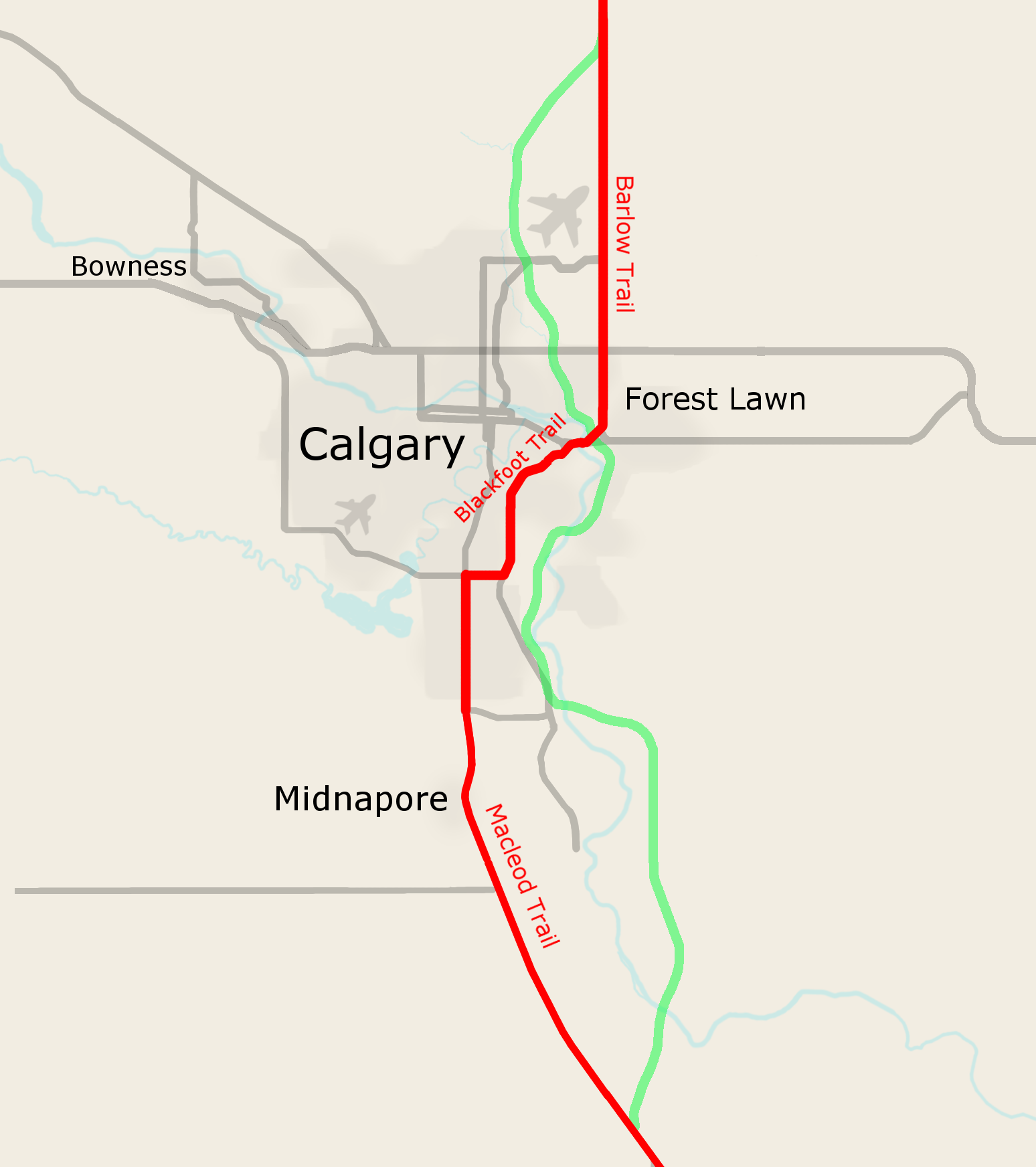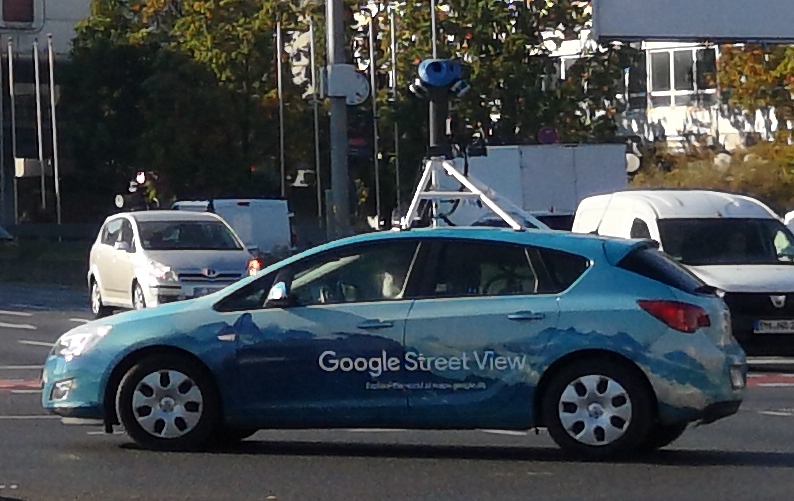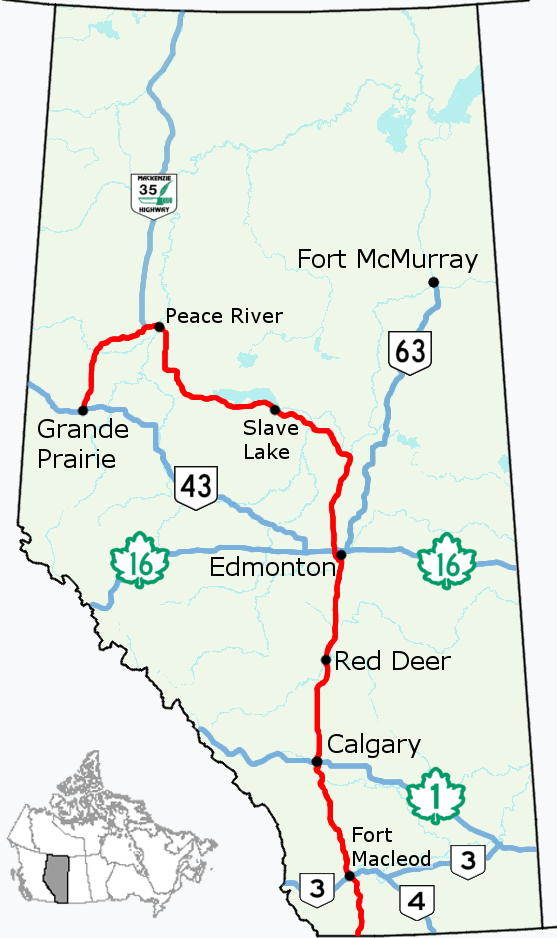|
Blackfoot Trail
Blackfoot Trail is a super-4 expressway in Calgary, Alberta. It is named for the Blackfoot Confederacy, and more specifically the Siksika Nation, located east of Calgary. The road runs from 17 Avenue SE in the north, where Blackfoot Trail meets Deerfoot Trail ( Highway 2), to Southland Drive in the south. It is the historical alignment of Highway 2 in south Calgary. The section of Blackfoot Trail between 19 Street SE and Deerfoot Trail is a former alignment, and still technically part of, 17 Avenue SE; however, it is generally referred to as being part of Blackfoot Trail. History Prior to the construction of Deerfoot Trail, which was originally named the Blackfoot Trail Freeway, Blackfoot Trail was the routing of Highway 2 through the southern portion of Calgary. It continued south to 66 Avenue SE (present-day Glenmore Trail) and Macleod Trail. At the north end, Highway 2 continued east on 17 Avenue SE, befor ... [...More Info...] [...Related Items...] OR: [Wikipedia] [Google] [Baidu] |
Calgary
Calgary ( ) is the largest city in the western Canadian province of Alberta and the largest metro area of the three Prairie Provinces. As of 2021, the city proper had a population of 1,306,784 and a metropolitan population of 1,481,806, making it the third-largest city and fifth-largest metropolitan area in Canada. Calgary is situated at the confluence of the Bow River and the Elbow River in the south of the province, in the transitional area between the Rocky Mountain Foothills and the Canadian Prairies, about east of the front ranges of the Canadian Rockies, roughly south of the provincial capital of Edmonton and approximately north of the Canada–United States border. The city anchors the south end of the Statistics Canada-defined urban area, the Calgary–Edmonton Corridor. Calgary's economy includes activity in the energy, financial services, film and television, transportation and logistics, technology, manufacturing, aerospace, health and wellness, retail, and ... [...More Info...] [...Related Items...] OR: [Wikipedia] [Google] [Baidu] |
P130b Blackfoot Chiefs
P13 may refer to: Aircraft * Aviatik P.13, a German reconnaissance biplane * Lippisch P.13, a German experimental bomber * Thomas-Morse XP-13 Viper, an American experimental biplane fighter Transport * Highway P13 (Ukraine), now numbered H28 * London Buses route P13 * P13 Road (Zimbabwe) * San Carlos Apache Airport, in Gila County, Arizona, United States Other uses * Matumbi language * NRK P13, a Norwegian radio station * Papyrus 13, a biblical manuscript * Pattern 1913 Enfield, a rifle * Puente 13 Puente 13 (P13) is a street gang in La Puente, California. They are Sureños. They are described as Mafia related or Mexican mafia related. They were formed ''c.'' 1953 as the Bridgetown Gentlemen (''puente'' is Spanish "bridge"), or "Old Town Pue ..., a street gang in La Puente, California * P13, a film rating in Malaysia See also * 13P (other) {{Letter-NumberCombDisambig ... [...More Info...] [...Related Items...] OR: [Wikipedia] [Google] [Baidu] |
Bow River
The Bow River is a river in Alberta, Canada. It begins within the Canadian Rocky Mountains and winds through the Alberta foothills onto the prairies, where it meets the Oldman River, the two then forming the South Saskatchewan River. These waters ultimately flow through the Nelson River into Hudson Bay. The Bow River runs through the city of Calgary, taking in the Elbow River at the historic site of Fort Calgary near downtown. The Bow River pathway, developed along the river's banks, is considered a part of Calgary's self-image. First Nations made varied use of the river for sustenance before settlers of European origin arrived, such as using its valleys in the buffalo hunt. The name ''Bow ''refers to the reeds that grew along its banks and were used by the First Nations to make bows; the Blackfoot language name for the river is , meaning "river where bow reeds grow". The river is an important source of water for irrigation and drinking water. Between the years 1910 and 1 ... [...More Info...] [...Related Items...] OR: [Wikipedia] [Google] [Baidu] |
Downtown Calgary
Downtown Calgary is a dense urban district in central Calgary, Alberta. It contains the second largest concentration of head offices in Canada, despite only being the country's fourth largest city in terms of population. The downtown is divided into several residential, commercial, corporate, and mixed-use neighbourhoods, including the Financial District (CBD), Eau Claire, Chinatown, East Village, Beltline, and the West End. Downtown Calgary is bordered by 14th Street W. on the west, the Bow River and Prince's Island Park on the north, the Elbow River on the east and the CPR mainline tracks on the south. The neighbourhoods of the Beltline and Mission to the immediate south are often considered part of downtown, due to the high concentrations of businesses, high population densities, and occurrence of retail and nightlife opportunities, but strictly speaking they are not technically part of downtown. The population of Calgary's downtown has grown substantially in recent years ... [...More Info...] [...Related Items...] OR: [Wikipedia] [Google] [Baidu] |
Partial Cloverleaf Interchange
A partial cloverleaf interchange or parclo is a modification of a cloverleaf interchange. The design has been well received, and has since become one of the most popular freeway-to-arterial interchange designs in North America. It has also been used occasionally in some European countries, such as Germany, Hungary, Italy, the Netherlands, and the United Kingdom. Comparison with other interchanges *A diamond interchange has four ramps. *A cloverleaf interchange has eight ramps, as does a stack interchange. They are fully grade separated, unlike a parclo, and have traffic flow without stops on all ramps and throughways. *A parclo generally has either four or six ramps but less commonly has five ramps. Naming In Ontario, the specific variation is identified by a letter/number suffix after the name. Ontario's naming conventions are used in this article. The letter ''A'' designates that two ramps meet the freeway ''ahead'' of the arterial road, while ''B'' designates that two ram ... [...More Info...] [...Related Items...] OR: [Wikipedia] [Google] [Baidu] |
Barlow Trail
Barlow Trail is a major arterial road in Calgary, Alberta, that is composed of three parts: the southern section which runs from Deerfoot Trail near 130 Avenue SE to Deerfoot Trail at the intersection with Peigan Trail. The afore mentioned section is the central section which runs from 17 Avenue SE to McCall Way; and the northern section which runs from Airport Road (the main entrance into the Calgary International Airport) to 128 Avenue NE. The central and northern sections of Barlow Trail is run roughly where the fifth meridian lies in the Dominion Land Survey. The road is named for Noel Barlow, a resident of Carseland, Alberta, Canada, who served as the ground crewman to Douglas Bader, a Royal Air Force flying ace in World War II. History Barlow Trail used to be the main northern entrance into the city of Calgary and was a continuous roadway. It served as a portion of Alberta Highway 2 from the northern city limits to Blackfoot Trail, near the present location of the M ... [...More Info...] [...Related Items...] OR: [Wikipedia] [Google] [Baidu] |
Macleod Trail
Macleod Trail is a major road in Calgary, Alberta. It is a six- to eight-lane principal arterial road extending from downtown Calgary to the south of the city, where it merges into Highway 2. South of Anderson Road, Macleod Trail is an expressway and is slated to be upgraded to a freeway in the future. It is named for its destination to the south, Fort Macleod. Route description Macleod Trail effectively divides the southwest and the southeast quadrants of the city, and many communities (inner city as well as suburban) were developed along its course. Macleod Trail (along with Crowchild Trail and Deerfoot Trail) constitutes one of the three major north-south corridors of the city. Beginning as a one-way street for northbound traffic (with southbound traffic following 1st Street SE one block to the west), the road passes by Calgary City Hall, Olympic Plaza, the building that housed the former Calgary Central Library, and the EPCOR Centre for the Performing Arts. South of downtow ... [...More Info...] [...Related Items...] OR: [Wikipedia] [Google] [Baidu] |
Deerfoot Trail Map 1969 Map
Deerfoot (1828 – 18 January 1896, Cattaraugus Reservation) was an American Seneca runner. His most noted achievements took place in England. Biography Deerfoot–Red Jacket, or Hut-goh-so-do-neh in his native tongue, was born into the Seneca tribe on the Cattaraugus Reservation in the year 1828. Other sources claim his birth year was either 1830, 1826, or 1825. Deerfoot, also known as Lewis Bennett, was first recognized for his racing talent in 1856 when he won a five-mile race in Fredonia at the Chautauqua County Fair by running it in 25:00 flat, cashing in on a $50 purse.Greater buffalo sports hall of fame. (2014). Retrieved from http://buffalosportshallfame.com/member/lewis-deerfoot-bennett/ Deerfoot sometimes raced under his fondly dealt nickname Red Jacket, a title that both referenced a celebrated Seneca chief and cited his colorful and often revealing racing outfits.Lovesy, P. (1968). The kings of distance. (pp. 15-40). London: Eyre & Spottiswoode. In a race in New Yor ... [...More Info...] [...Related Items...] OR: [Wikipedia] [Google] [Baidu] |
Google Street View
Google Street View is a technology featured in Google Maps and Google Earth that provides interactive panoramas from positions along many streets in the world. It was launched in 2007 in several cities in the United States, and has since expanded to include cities and rural areas worldwide. Streets with Street View imagery available are shown as blue lines on Google Maps. Google Street View displays interactively panoramas of stitched VR photographs. Most photography is done by car, but some is done by tricycle, camel, boat, snowmobile, underwater apparatus, and on foot. History and features Street View had its inception in 2001 with the Stanford CityBlock Project, a Google-sponsored Stanford University research project. The project ended in June 2006, and its technology was folded into StreetView. * 2007: Launched on May 25 in the United States using Immersive Media Company technology. * 2008: In May Google announces that it was testing face-blurring technology on it ... [...More Info...] [...Related Items...] OR: [Wikipedia] [Google] [Baidu] |
Alberta
Alberta ( ) is one of the thirteen provinces and territories of Canada. It is part of Western Canada and is one of the three prairie provinces. Alberta is bordered by British Columbia to the west, Saskatchewan to the east, the Northwest Territories (NWT) to the north, and the U.S. state of Montana to the south. It is one of the only two landlocked provinces in Canada (Saskatchewan being the other). The eastern part of the province is occupied by the Great Plains, while the western part borders the Rocky Mountains. The province has a predominantly continental climate but experiences quick temperature changes due to air aridity. Seasonal temperature swings are less pronounced in western Alberta due to occasional Chinook winds. Alberta is the fourth largest province by area at , and the fourth most populous, being home to 4,262,635 people. Alberta's capital is Edmonton, while Calgary is its largest city. The two are Alberta's largest census metropolitan areas. More tha ... [...More Info...] [...Related Items...] OR: [Wikipedia] [Google] [Baidu] |
Alberta Highway 2
Alberta Provincial Highway No. 2, commonly referred to as Highway 2 or the Queen Elizabeth II Highway, is a major highway in Alberta that stretches from the Canada–United States border through Calgary and Edmonton to Grande Prairie. Running primarily north to south for approximately , it is the longest and busiest highway in the province carrying more than 170,000 vehicles per day near Downtown Calgary. The Fort Macleod—Edmonton section forms a portion of the CANAMEX Corridor that links Alaska to Mexico. More than half of Alberta's 4 million residents live in the Calgary–Edmonton Corridor created by Highway 2. U.S. Route 89 enters Alberta from Montana and becomes Highway 2, a two-lane road that traverses the foothills of southern Alberta to Fort Macleod where it intersects Highway 3 and becomes divided. In Calgary, the route is a busy freeway named Deerfoot Trail that continues into central Alberta as the Queen Elizabet ... [...More Info...] [...Related Items...] OR: [Wikipedia] [Google] [Baidu] |
Siksika Nation
The Siksika Nation ( bla, Siksiká) is a First Nation Indigenous peoples are culturally distinct ethnic groups whose members are directly descended from the earliest known inhabitants of a particular geographic region and, to some extent, maintain the language and culture of those original people ... in southern Alberta, Canada. The name ''Siksiká'' comes from the Blackfoot language, Blackfoot words ''sik'' (black) and ''iká'' (foot), with a connector ''s'' between the two words. The plural form of ''Siksiká'' is ''Siksikáwa''. The ''Siksikáwa'' are the northernmost of the ''Niitsítapi'' (Original People), all of whom speak dialects of Blackfoot, an Algonquian languages, Algonquian language. When European explorers travelled west, they most likely met the ''Siksiká'' first. The four ''Niitsítapi'' nations of the Blackfoot Confederacy are the ''Siksiká'', ''Káínaa'' (Kainai Nation, Kainai or Blood), ''Aapátohsipikáni'' (Northern Peigan), and ''Aamsskáápipika ... [...More Info...] [...Related Items...] OR: [Wikipedia] [Google] [Baidu] |








